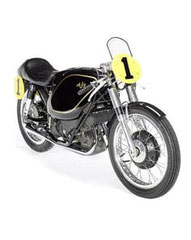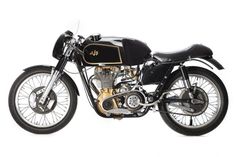
AJS Motorcycle PDF Manuals
History of AJS Motorcycles
Above on the page there are several PDF Manuals for AJS Motorcycles.
For the first time, the chain drive of the upper camshaft for motorcycle engines was used by AJS, whose fireballs participated in many and fruitful road races.
But in order to win, you need to improve your technique all the time.
In the 1920-ies, racing motorcycles had a small revolution.
In the design of the engines of such motorcycles, timing belts of the OHC type began to be used.
AJS overslept this moment, the number of victories on the track has greatly decreased, we had to urgently reduce the backlog.
Phil Walker, chief designer of AJS, went his own way when creating a new engine for racing motorcycles.
If competitors used a vertical shaft and bevel gears as a camshaft drive, Walker used a chain drive.
This had an advantage, but there were also disadvantages.
The chain could stretch, finally break, with all the ensuing consequences.
And yet, AJS took a risk and used a chain drive.
To compensate for chain stretch, a Weller tensioner was used.
In general, Walker simplified access to the drive chain as much as possible by covering it with a removable aluminum casing.
In their first season in 1927, the new AJS motorcycles were on the track, garnering a wide range of Grand Prix victories.
They missed the 1928 season, the motorcycle chassis was being improved, which did not match the capabilities of the engine.
But in the 1929 season, the AJS team came off in full.
Here and victories in the Grand Prix, and record races at various distances.
The success of the AJS motorcycles made them a good advertisement and there were many who wanted to buy such equipment.
AJS owner John Stevens gave the go-ahead for small-scale production of these motorcycles.
They were designed for amateur racers and were intended purely for the track.
It was not enough to use these motorcycles as road madmen, because it required the presence of a personal mechanic who was ready to service the motorcycle after each trip, or hands sharpened correctly.
The motorcycles were named AJS R7 350cc version and AJS R10 500cc version.
The gearbox is four-speed.
In 1931, AJS was overwhelmed by the waves of the Great Depression and the company went bankrupt, it was acquired by the Collier brothers, owners of Matchless.
The production of overhead valve motorcycles at AJS is temporarily forgotten.
At some point, the Matchless bosses were surprised to find that AJS bikes were still racing on the track.
In 1933, the production of AJS R7 and R10 was resumed and, undergoing periodic modernization, these motorcycles were produced right up to the beginning of the seventies.


